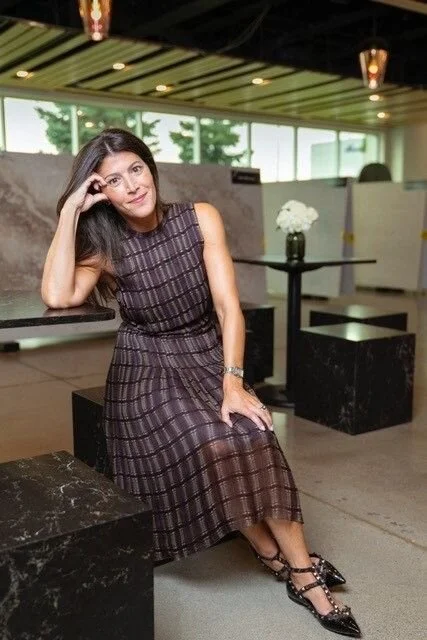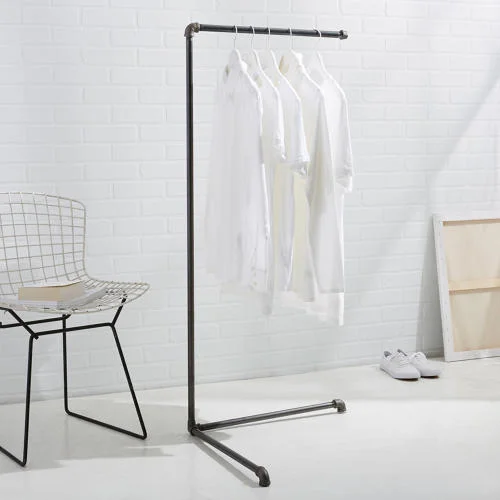Look at that bamboo out there.” Dale Alberda points out the window of NBBJ, the architecture firm where he serves as design principal. One story down in the bright-gray South Lake Union alleyway, there they are. They’re nice, leafy little fellows. Healthy, green, they seem happy where they’re at.
Niloo by Feiz Design Studio for Artifort at salone del mobile 2016
Feiz Design Studio combines color and simplicity to form the ‘niloo’ chair for Dutch furniture brand artifort. A contemporary reinterpretation of the two-part african chair, ‘niloo’ slides and interlocks to form a seat both comfortable and structurally sound. Feiz and team, who have worked with artifort previously, looked to company’s history to find an innovative way forward. Drawing from the congo and pinguïn by Theo Ruth, ‘niloo’ offers a modern aesthetic while staying true to seamless two-part composition.
The Dutch Designer Behind Vitra's Color Revolution
There’s something refreshing about a design practice that doesn’t engage with the all-consuming, black-hole hype machine that has swallowed up the design industry. The only black hole in Hella Jongerius’s design studio in Berlin is a faceted, spiky doughnut made of triangular planes and painted an industrial noir so deep it pulls light into it. There’s no hype, no starlight so bright as to blind. That there easily could be, given Jongerius’s standing among today’s most influential designers, makes its absence all the more sweet.
What our enduring love of wooden office furniture tells us about how we work
As the office continues to evolve so too do the materials used within it. While many corporate headquarters make liberal use of brushed steel, aluminium and glass, an ancient, well loved and sustainable material is becoming increasingly popular all over again. Wood never went away, of course, but the latest ideas about office design seem to have given it a new lease of life as a material. In part this is down to an inherent love for wood, but it is also acknowledges the aesthetic and functional crossover between the office and other places where we work such as cafes, hotels and homes. Nowhere is this more apparent than in the new generation of commercial office furniture designs. In many ways they hark back to the 1950s when the British were introduced to modernism in no uncertain terms. This design movement led the British to reject dark woods and embrace new forms and materials including lighter, arguably more natural woods.
Designer Vladimir Kagan Dies at Age 89
Designer Vladimir Kagan died of a heart attack on April 7 at age 89. His furniture designs have endured for more than half a century. His early work, often with a sinuous wooden frame, was characteristic of a fluid, sculptural modern post-war style in the late 1940s and the 1950s. His later pieces were more focused on an architectural minimalism.
How West Elm Became An Unlikely Incubator Of Independent Design
Most independent designers would kill for a mass retailer to sell their work—unless it put them out of business. One of the harsh realities of partnering with large companies—which increasingly see independent design as a way to differentiate their wares from competitors'—is meeting demand. Making 100 of a particular item is not the same thing as making thousands; in many cases, a sudden large order from a retailer could throw the supply chain out of whack. Moreover, buying the materials and supplies to make an order often requires a large investment that can be financially burdensome.
Object Thought: Designer Michael Anastassiades and the pursuit of timelessness
Michael Anastassiades is fixated on quality. Or as he puts it less mildly, “I’ve always been obsessed with perfection.” So much so that in 2007 the designer was driven to launch his own brand, and put to rest his ongoing concerns over materials, manufacturing, marketing, and so on. And the work is indeed impeccable—to the point where describing it seems as futile an exercise as trying to explain what a Bach cello suite sounds like or what a perfectly fried egg tastes like.
Coinciding with Salone del Mobile 2016, Herman Miller presents “The Double Dream of Spring,” an environmental installation by Michael Anastassiades. To debut his inaugural collection of occasional furnishings created exclusively for Herman Miller, the designer has conceived an enigmatic environment inspired by the tradition of metaphysical surrealism and steeped in his own minimalist aesthetic.
Read more and watch a video of the designer at hermanmiller.com >
THE THREE FACES OF HUMAN-CENTERED DESIGN
Charlie Grantham’s approach to design is to create environments which promote wholeness among the people that occupy those spaces. In this article, he links that idea of wholeness to social science in an effort to show that human-centered design is a practical way to make our workplaces not just more operationally efficient, but more life-affirming, too.
Trend Alert: Workspace Design Trends Report
Last year’s design trends predictions included bold colors and patterns, use of natural elements, white, open workspaces, and more. A few days ago, workplace design expert, Kontor, released their first 2016 quarterly trends report. Kontor’s report shows that dining and coffeeshop inspired spaces are not just an amenity but also a sort of conference room. “They provide an informal place to connect with colleagues and host meetings.”
An Arborizing Chair
Designers have long looked to nature as a source of inspiration, drawing upon its tried and true systems to build everything from velcro to bullet trains. But, what about when it comes to capturing the 'sense' of a plant? Or the feeling of its growth? These less tangible characteristics are what inspired Russian designer Lera Moiseeva to design the Ray Chair, a chair inspired by the growth of a plant—a simultaneous reach towards the light, while burrowing roots deep into the ground.
Space-Saving Furniture Concepts You Can Actually Build: How Häfele's Hardware Delivers "More Life per Square Meter"
In Häfele's world, furniture and interior spaces are magic. Cabinet doors swing upwards and out of the way, drawers close themselves, surfaces appear where none were before, objects of one utility transform into objects of another. However, the company is not a furniture manufacturer, but a world leader in architectural and cabinet hardware and fittings—and the nature of their products actually provides a tricky problem for presenting at trade shows like Holz-Handwerk.
The airport of 2030 and how technology can play a part
The relationship between technology and its impact on human experience has never been more poignant than in a world where we have the instant ability to access information from a myriad of sources, literally at our fingertips.
Industrial designer Ross Lovegrove offers his vision of the future
The inventor of the Car on a Stick tells Kylie Knott about creating products relevant to the 21st century.
The secret that makes Japanese and Swedish design look so similar—and so good
Two of the world’s design superpowers are coming together in a quiet, cheerful explosion: MUJI, the lifestyle brand and veritable design ambassador of Japanese culture, has launched a line of Swedish goods. Their roughly 40-item MUJI Sweden catalogue includes Swedish melamine tableware, a special potato cutting board and a curious wall-mounted holder for coffee filters, typical of households in the world’s third largest coffee-drinking nation.
The TED Speaker Building a Parallel Universe
By the time they were considered successful, Charles and Ray Eames were in their fifties.TED speakers come from a variety of backgrounds. From engineers to artists to lawyers, the stage of TED has seen many unique ideas that have changed our perception of things. However, the idea Eames Demetrios has may change how we understand and tell the difference between reality and fiction. Eames is a geographer, filmmaker and the director of the Eames Office, who is building a parallel universe.
WHERE TWO WORLDS COLLIDE…
Mark Barrell, Design Director at The Boss Design Group, talks to us about the crossover between the workplace and hospitality sectors. The Boss Design Group is a designer and manufacturer of office seating. Established in the UK in 1983, the company now operates multiple production facilities around the world and has supplied more than half of the UK’s FTSE 100 companies.
Bertoia at 100: Harry Bertoia Centennial Celebration
Harry Bertoia Turned 100 Years Old Today
The past year marked the centennial celebration of the world-renowned sculptor and designer Harry Bertoia. Knoll hosted an honorary event "Bertoia at 100" in commemoration of the designer and his enduring legacy. Glenn Adamson, the Nanette L. Laitman Director of Museum of Arts and Design, gave a presentation titled "Learning from Bertoia" surveying Bertoia's large body of work.
Read the article on knoll.com >
Also Read " Making Bertoia: Take a past-and-present look at the production process of the Bertoia Collection"
Vacuum Urban Furniture Design Aims To Connect People in Modern Busy Life
Vacuum has been designed as an urban furniture design. It focuses to the relationship between the people that live in same city, it is designed with “Living Memory Storage” for the city in mind. It aims to make people come together and hangout. Vacuum aims to create a social network all around the city using urban furniture design, it aims to create a ritual that supports the relationship between the people that live in the same city. It focuses to provoke the ‘City’s Soul’ and acts as a reminder of its existence.
Beyond Beta: Virtual Reality In the Real World
With virtual reality (VR) headsets like the Oculus Rift and HTC Vive shipping to consumers in the very-near future, everyone is eager to find out if 2016 will be the year of VR. For many, VR is still an experiment or in beta, but for the past 16 months, IA has been using VR with great success. In the immediate future, it could spark a paradigm shift in the way our clients communicate with us and experience their designs.
3 Things that Drive Ayse Birsel of Birsel + Seck
Ayse Birsel of Birsel + Seck—the very first speaker at this year's Giants of Design conference in Palm Springs, CA—has designed products we use everyday, such as kitchen utensils for JCPenney and Target, and packaging for Johnson & Johnson. She’s an author and a creative. To get to know what drives Ayse, we tracked down the physical things she likes most—and why.

























